How to Write an ATS Formatted Resume
During the job application process, an application will likely run through an applicant tracking system (ATS) software before it’s seen by a recruiter or hiring manager.
Writing an ATS formatted resume and cover letter will increase your chances of being selected for an interview.
This process allows the system software to identify and accept resumes with matching criteria, helping to streamline the hiring process. A resume and cover letter that have been formatted specifically for the job you are applying for will be more likely to be submitted for review.
Today’s job seekers should be aware of how these systems function and how to successfully write an ATS formatted resume.
Writing an ATS formatted resume, created specifically to pass through an ATS, will increase your chances of being selected for an interview. When you apply for a job, an ATS system will scan your submitted resume and cover letter to identify keywords that match the job description. The system will also store your resume and information and may highlight or rank applications deemed to be a good match for the role.
Here are 10 best practices for writing an ATS formatted resume:
1. Use basic formatting
Choose a universally basic font (Arial, Times New Roman, Calibri, Cambria, etc). Consider adding bullet points, or bolded or underlined words as well. Don’t put anything in the headers or footers as ATS are typically unable to read text in that part of the document.
2. Use basic language.
Describe your experience in simple terms that are easy to understand and match how you would speak in a job interview. And be sure to write out any acronyms (for example, “Experienced in Search Engine Optimization (SEO).”)
3. Use a basic layout.
Some ATS may have a hard time identifying relevant content from a complex layout. Columns and graphs aren’t identifiable to these systems, so be sure to write out any of this information within your work experience section.
4. Include basic headers.
Headers with creative or catchy names may confuse an ATS. However, these section headers are much more clear: Summary, Work Experience, Education, Skills, Achievements or Accomplishments, Publications, Training, Certifications, Volunteer Work, Awards and Honors.
5. Include keywords.
Review the job description and identify keywords from the skills and experience sections. Include applicable keywords throughout your resume in a way that naturally highlights your experience.
6. Most recent experience first.
Both ATS and Recruiters typically read the first item listed as the most recent, so writing in a reverse chronological format (most recent first) is best.
7. Include referrals.
A recruiter or hiring manager may want to hear directly from a colleague or former employer. To increase your chances of passing through an ATS, be sure to include relevant referral information.
8. Customize each resume.
Make small changes to your headline, experience, and skills for each role you apply to. Even if multiple positions are similar, identify differences between them and tailor your resume accordingly. You can also visit each company’s website to learn more about them and speak to this knowledge throughout your resume and cover letter.
9. Submit the correct file format.
ATS are typically able to read documents (.doc or .docx) easier than PDFs or images (.pdf or .jpg), so be sure to submit your resume in the correct file format.
10. Be selective.
ATS store submitted resumes and hiring managers are able to sort through these at any time. In addition to your application history, the number of active applications you’ve opened will also be visible. Be selective about the roles you’re applying for to demonstrate your focus on finding the right position.
If you’re still feeling unsure of your resume, connect with a Balance Staffing Recruiter today.




